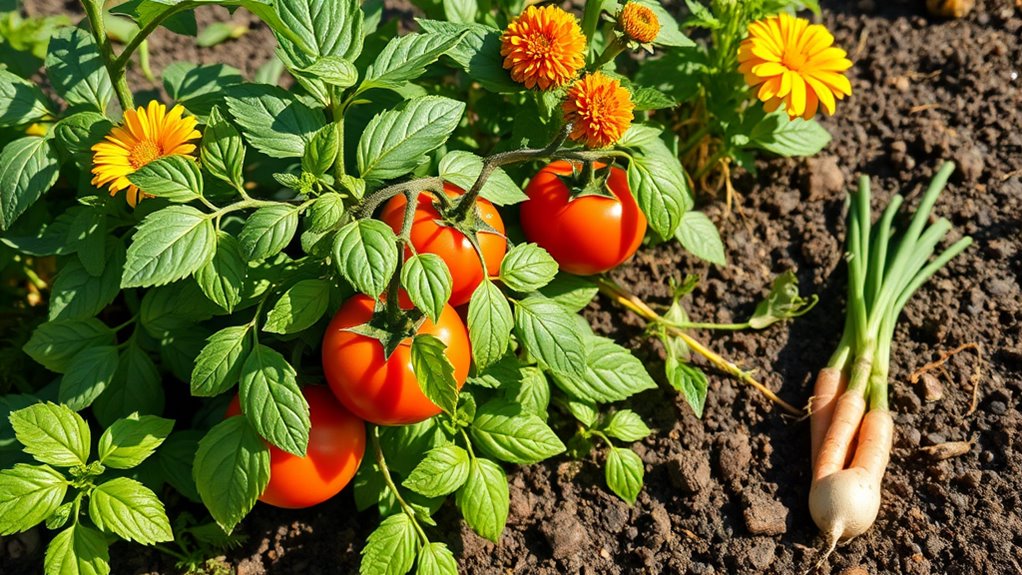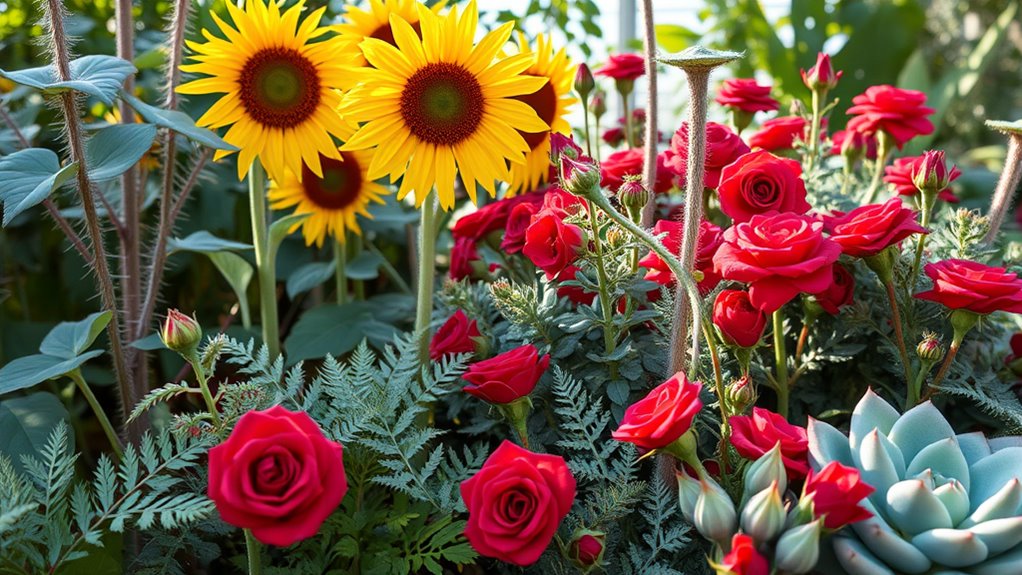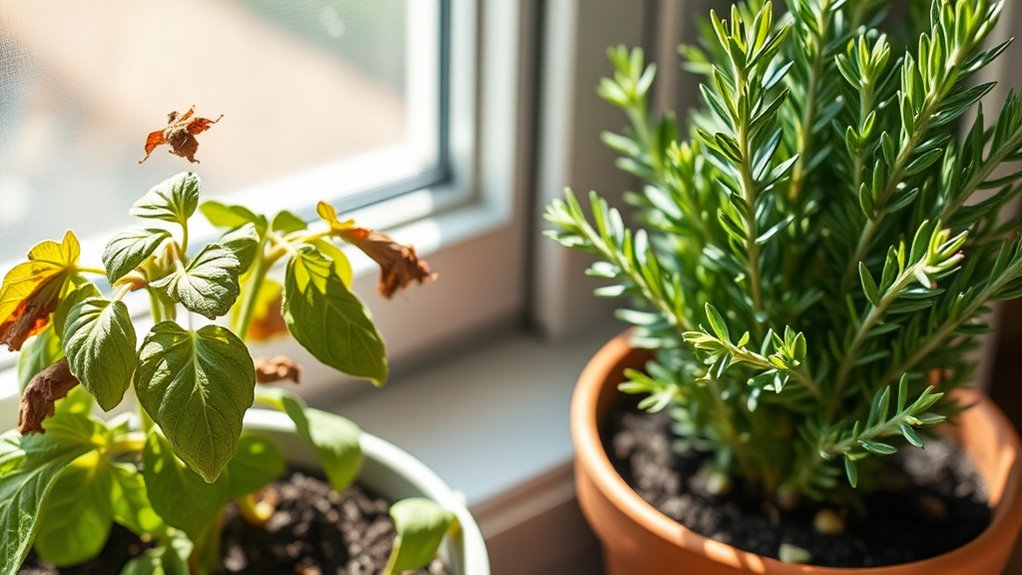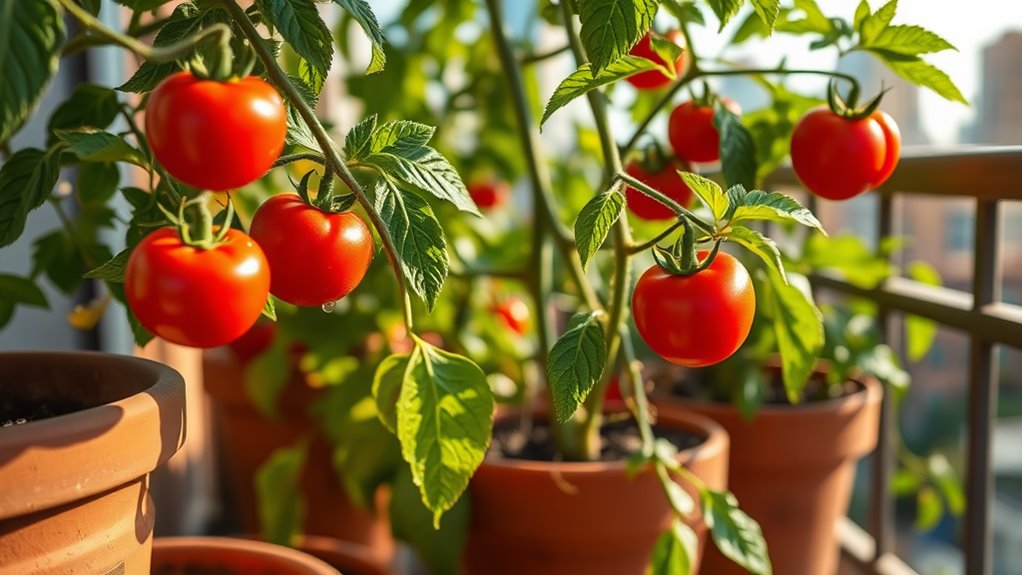I Tried Companion Planting for the First Time – Here’s What Happened
You’ve tried companion planting for the first time, discovering how pairing basil with tomatoes repels pests and boosts yields, while proper bed prep like testing soil pH and adding compost prevents issues like root rot from overwatering. As you observe growth, handle unexpected pests with organic sprays and track plant interactions for mutual benefits. You’ll soon uncover more strategies to refine your garden and achieve even greater success.
Key Takeaways
- Choose compatible plants like basil with tomatoes to naturally repel pests and enhance growth.
- Test soil pH and add compost to ensure fertile conditions for healthy plant establishment.
- Monitor for issues like overwatering or pests, using organic sprays to maintain plant health.
- Observe benefits such as improved pest management and higher yields from mutual plant support.
- Experiment with crop rotation and adjustments to sustain soil fertility and prevent diseases.
Choosing the Right Plants
When you’re selecting plants for companion planting, focus on their compatibility to maximize garden health and yield.
As a beginner in companion planting, you’ll start by researching pairs that thrive together, like basil with tomatoes to repel insects or marigolds with vegetables to deter nematodes.
Choose plants with complementary needs—ones that attract beneficial insects or provide natural shade. This strategy enhances pollination and nutrient uptake, making your first efforts more effective and enjoyable.
Avoid aggressive growers that might overwhelm others, ensuring a balanced, productive setup for novice gardeners. Additionally, be mindful of harmful pairings to prevent issues like disease spread or nutrient competition.
One effective example is the Basil and Tomato Pairing, which can enhance growth, flavor, and pest resistance in your garden.
Preparing the Garden Bed
Properly preparing your garden bed lays the groundwork for thriving companion plants. Start by testing soil pH and nutrients to identify amendments needed. Clear debris and weeds, then till deeply for aeration. Add organic matter like compost to boost fertility and structure, ensuring good drainage. By applying universal soil prep methods, you can adapt these techniques to various environmental conditions for optimal results. Additionally, soil testing plays a key role in enhancing plant health by optimizing conditions for better growth and higher yields.
| Preparation Step | Key Benefit |
|---|---|
| Test Soil pH | Prevents nutrient imbalances |
| Clear Debris | Reduces competition for resources |
| Till Soil | Improves root penetration |
| Add Compost | Enhances soil fertility |
| Level Surface | Promotes even water distribution |
Follow these steps for a robust foundation.
Planting and Initial Setup
Once you’ve set up your garden bed, dive into planting by selecting compatible plants and arranging them to maximize mutual benefits, such as pest control and nutrient sharing.
Begin by researching ideal pairs, like basil with tomatoes to repel pests and improve growth. Position taller plants, such as corn, to shade sensitive ones like lettuce, while ensuring adequate sunlight for all. This approach is supported by scientific principles that explain how certain plants enhance each other’s growth.
Dig holes to the appropriate depth for each plant’s roots, promoting strong establishment. Space them precisely to prevent competition, allowing for optimal airflow and nutrient uptake.
Water thoroughly right after planting to encourage quick rooting and a thriving start.
By incorporating companion planting strategies, you can enhance garden health and boost overall productivity.
Dealing With Unexpected Issues
Even though you’ve meticulously set up your companion planting, unexpected issues like pests, diseases, or weather shifts can disrupt your garden. You’ll need to identify problems early and respond decisively. For instance, use organic sprays for pests or adjust watering for droughts, turning setbacks into learning opportunities. To effectively manage common threats, focus on top five pests as outlined in essential pest control strategies. Additionally, explore unconventional remedies to enhance your pest management strategies.
| Unexpected Issue | Emotional Response | Authoritative Tip |
|---|---|---|
| Pests invading | Frustration and worry | Introduce beneficial insects immediately. |
| Disease outbreaks | Disappointment and fear | Remove affected plants promptly. |
| Weather extremes | Anxiety and helplessness | Mulch soil to stabilize conditions. |
Stay proactive to safeguard your efforts.
Observing Growth and Changes
As you monitor your companion plants’ progress, you’ll quickly spot subtle changes that reveal their health and interactions.
Watch for vibrant leaf colors signaling nutrient absorption or wilting indicating water stress. Measure growth rates weekly; for instance, beans climbing corn stalks show mutual support.
Observe pest dynamics, such as basil deterring aphids from peppers, enhancing overall resilience. Track flowering timelines to assess pollination boosts, ensuring precise symbiotic evaluations.
These observations empower you to fine-tune your garden, fostering optimal plant harmony and vitality. To avoid common mistakes, always research plant pairings thoroughly before implementing them in your garden.
Reflecting on my first experience, where I selected specific plants and navigated initial challenges, I encountered surprising results that highlighted the true potential of this gardening method.
Reflections on the Experience
As you reflect on your companion planting journey, you’ve likely encountered unexpected outcomes that challenged your initial plans and revealed nature’s unpredictability.
These surprises offer key lessons you’ve absorbed, such as adapting techniques to boost plant health and yield. For example, recognizing incompatible vegetables can help avoid negative interactions that hinder growth.
Incorporating these insights can help you achieve a bountiful harvest in your own vegetable garden.
Unexpected Outcomes
While you delve into companion planting, surprises often arise that reshape your garden’s dynamics.
You’ll discover that marigolds, intended to deter pests, might attract beneficial insects you didn’t anticipate, boosting pollination unexpectedly.
Conversely, basil paired with tomatoes could compete for nutrients, stunting growth in ways that catch you off guard.
These twists challenge your plans, revealing how plant interactions create unforeseen synergies or conflicts.
As an authoritative guide, remember that such outcomes test your adaptability, turning initial setbacks into intriguing garden evolutions that enhance your overall experience.
Lessons Learned
Reflecting on your companion planting journey, key lessons emerge from those unexpected twists, teaching you to adapt strategies for better results.
You’ve learned that thorough research on plant compatibilities prevents conflicts, like pairing basil with tomatoes to deter pests effectively.
Always monitor soil conditions closely; overwatering led to root rot in your setup, so test pH levels first.
Embrace trial and error—rotate crops next season to avoid nutrient depletion.





